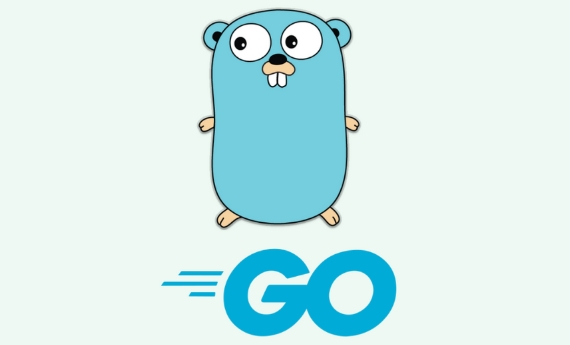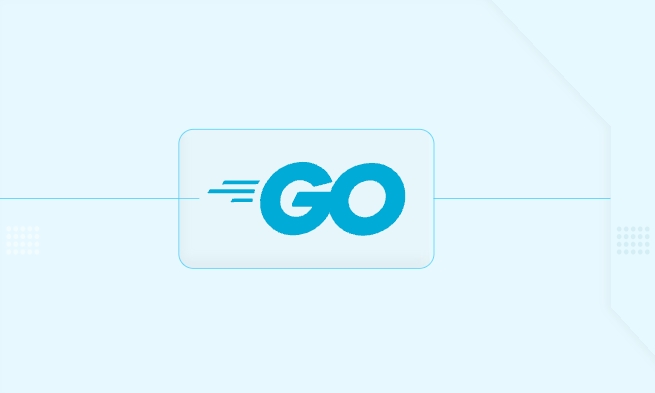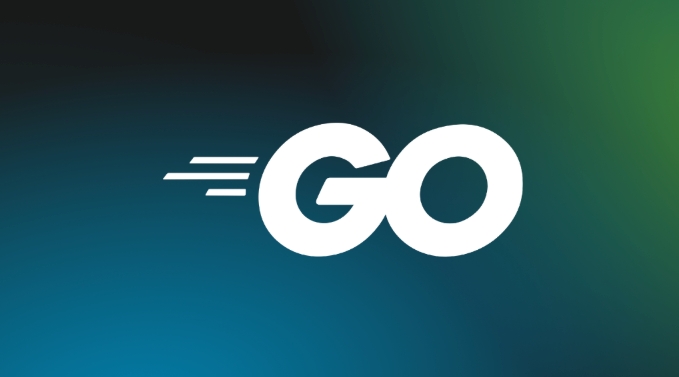How to marshal a golang struct to JSON with custom field names?
Jun 30, 2025 am 01:59 AMIn Go, if you want the structure field to use a custom field name when converting to JSON, you can implement it through the json tag of the structure field. 1. Use the json: "custom_name" tag to specify the key name of the field in JSON. For example, Name string json: "username"" will make the Name field output as "username"; 2. Add, omitempty can control the omitted output when the field is empty. For example, Email string json: "email,omitempty"" will not display the field when the Email is an empty string. Note that the "empty" judgment criteria for pointer type and numeric type are different; 3. For nested structures or anonymous fields, you can also use json tags to name it, such as structure field Address json:"address_info``` will output the content of the Address with "address_info" as the key, and the anonymous field can also be renamed through the tag. These methods cover most of the requirements of JSON serialization scenarios.

In Go, if you want the structure field to be converted to JSON, you only need to specify it using the json tag in the structure tag. This method is simple and direct, but there are several details that need attention.

Custom field names using json tag
Go's standard library encoding/json will automatically read the field's json tag when serializing the structure to determine the output key name. For example:

type User struct {
Name string `json:"username"`
Age int `json:"user_age"`
} In the example above, Name field will be named "username" when outputting JSON, and Age will be named "user_age" .
If you do not set the json tag, then by default, the JSON key name is the structure field name and is in lowercase the initial letter. For example, if the field is named Email , then the JSON output is "email" .

Control whether to omit empty value
Sometimes you may want certain fields not to be displayed in JSON when they are empty (such as empty strings, 0, nil, etc.). At this time, you can add ,omitempty to the json tag:
type User struct {
Name string `json:"username,omitempty"`
Email string `json:"email,omitempty"`
} This way, if Email is an empty string, it will not appear in the final JSON result.
Pay attention to the following points:
- If the field type is a pointer,
omitemptyis also supported. - For numeric types (such as
int), a value of0will also be ignored by omitempty, so be careful. - The criteria for "empty" judgment of different data types are slightly different, and it is necessary to judge whether it is applicable based on the actual situation.
Handle nested structures and anonymous fields
If your structure contains other structures or anonymous fields, you can also control the output field name through the tag.
For example:
type Address struct {
City string `json:"city"`
Zip string `json:"zip_code"`
}
type User struct {
Name string `json:"username"`
Address `json:"address_info"`
} In this example, the JSON name corresponding to Addr field is address_info , and the output effect is as follows:
{
"username": "tom",
"address_info": {
"city": "Shanghai",
"zip_code": "200000"
}
} If it is an anonymous structure field, the field name will be promoted to the outer structure by default. If you want to rename this embedded field, you can also use the json tag to specify the name.
summary
Basically that's it. Just remember a few key points: use json tags to customize the field name, combine omitempty to control the null value output, and pay attention to the handling of nested structures. These techniques can cover most of the needs in real scenarios.
The above is the detailed content of How to marshal a golang struct to JSON with custom field names?. For more information, please follow other related articles on the PHP Chinese website!

Hot AI Tools

Undress AI Tool
Undress images for free

Undresser.AI Undress
AI-powered app for creating realistic nude photos

AI Clothes Remover
Online AI tool for removing clothes from photos.

Clothoff.io
AI clothes remover

Video Face Swap
Swap faces in any video effortlessly with our completely free AI face swap tool!

Hot Article

Hot Tools

Notepad++7.3.1
Easy-to-use and free code editor

SublimeText3 Chinese version
Chinese version, very easy to use

Zend Studio 13.0.1
Powerful PHP integrated development environment

Dreamweaver CS6
Visual web development tools

SublimeText3 Mac version
God-level code editing software (SublimeText3)

Hot Topics
 1794
1794
 16
16
 1739
1739
 56
56
 1590
1590
 29
29
 1467
1467
 72
72
 267
267
 587
587
 Strategies for Integrating Golang Services with Existing Python Infrastructure
Jul 02, 2025 pm 04:39 PM
Strategies for Integrating Golang Services with Existing Python Infrastructure
Jul 02, 2025 pm 04:39 PM
TointegrateGolangserviceswithexistingPythoninfrastructure,useRESTAPIsorgRPCforinter-servicecommunication,allowingGoandPythonappstointeractseamlesslythroughstandardizedprotocols.1.UseRESTAPIs(viaframeworkslikeGininGoandFlaskinPython)orgRPC(withProtoco
 Understanding the Performance Differences Between Golang and Python for Web APIs
Jul 03, 2025 am 02:40 AM
Understanding the Performance Differences Between Golang and Python for Web APIs
Jul 03, 2025 am 02:40 AM
Golangofferssuperiorperformance,nativeconcurrencyviagoroutines,andefficientresourceusage,makingitidealforhigh-traffic,low-latencyAPIs;2.Python,whileslowerduetointerpretationandtheGIL,provideseasierdevelopment,arichecosystem,andisbettersuitedforI/O-bo
 Is golang frontend or backend
Jul 08, 2025 am 01:44 AM
Is golang frontend or backend
Jul 08, 2025 am 01:44 AM
Golang is mainly used for back-end development, but it can also play an indirect role in the front-end field. Its design goals focus on high-performance, concurrent processing and system-level programming, and are suitable for building back-end applications such as API servers, microservices, distributed systems, database operations and CLI tools. Although Golang is not the mainstream language for web front-end, it can be compiled into JavaScript through GopherJS, run on WebAssembly through TinyGo, or generate HTML pages with a template engine to participate in front-end development. However, modern front-end development still needs to rely on JavaScript/TypeScript and its ecosystem. Therefore, Golang is more suitable for the technology stack selection with high-performance backend as the core.
 How to completely and cleanly uninstall Golang from my system?
Jun 30, 2025 am 01:58 AM
How to completely and cleanly uninstall Golang from my system?
Jun 30, 2025 am 01:58 AM
TocompletelyuninstallGolang,firstdeterminehowitwasinstalled(packagemanager,binary,source,etc.),thenremoveGobinariesanddirectories,cleanupenvironmentvariables,anddeleterelatedtoolsandcaches.Beginbycheckinginstallationmethod:commonmethodsincludepackage
 How to use channels for communication between goroutines in golang?
Jun 26, 2025 pm 12:08 PM
How to use channels for communication between goroutines in golang?
Jun 26, 2025 pm 12:08 PM
In Go language, channel is used for communication and synchronization between goroutines. Declare the use of make function, such as ch:=make(chanstring), send the ch
 How to use the select statement in golang for non-blocking channel operations and timeouts?
Jun 26, 2025 pm 01:08 PM
How to use the select statement in golang for non-blocking channel operations and timeouts?
Jun 26, 2025 pm 01:08 PM
In Go, using select statements can effectively handle non-blocking channel operations and implement timeout mechanisms. Non-blocking reception or sending operations are realized through the default branch, such as 1. Non-blocking reception: if there is a value, it will be received and printed, otherwise the default branch will be executed immediately; 2. Non-blocking transmission: If there is no receiver in the channel, the sending will be skipped. In addition, timeout control can be implemented in conjunction with time.After, such as waiting for the result or returning after 2 seconds. You can also combine non-blocking and timeout behaviors, try to get the value immediately, and wait for a short time after failure, so as to improve the program's concurrent response capabilities.
 What does the 'cannot find package' error mean during go build?
Jun 26, 2025 pm 12:57 PM
What does the 'cannot find package' error mean during go build?
Jun 26, 2025 pm 12:57 PM
When encountering a "cannotfindpackage" error, it is usually because Go cannot find the target package or dependency. The solution is as follows: 1. Check whether the import path is correct and ensure that it is consistent with the module path or directory structure; 2. Confirm that the go.mod file has been initialized and use gomodinit and gomodtidy to manage dependencies; 3. Run goget to download missing dependencies or clean the module cache; 4. Make sure to execute commands in the correct directory context, or specify the complete module relative path for construction.
 How to marshal a golang struct to JSON with custom field names?
Jun 30, 2025 am 01:59 AM
How to marshal a golang struct to JSON with custom field names?
Jun 30, 2025 am 01:59 AM
In Go, if you want the structure field to use a custom field name when converting to JSON, you can implement it through the json tag of the structure field. 1. Use the json: "custom_name" tag to specify the key name of the field in JSON. For example, Namestringjson: "username"" will make the Name field output as "username"; 2. Add, omitempty can control that the output is omitted when the field is empty, such as Emailstringjson: "email,omitempty""




